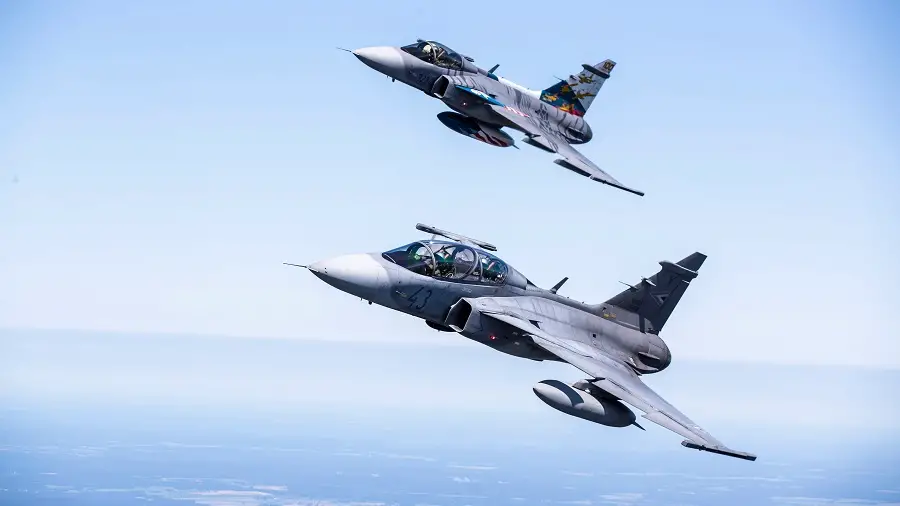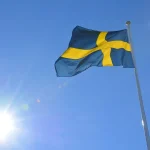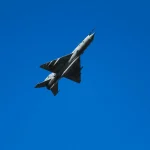
December the 7th, 2020 – The saga surrounding Croatia’s purchase of fighter jets still isn’t over yet. Despite the numerous options on the table from numerous countries, the Swedish offer is looking tempting indeed…
As Poslovni Dnevnik/Darko Bicak writes, we’re finally nearing the end of the competition for the selection of new fighter jets for the Croatian Air Force, and Sweden with its Gripen, France with Rafale and the USA, which offers a new F-16 in its own arrangement, and a used Barak with Israel are all competing for Croatia’s attention with more or less equal offers.
The decision should be made by mid-December, and the leaders of Saab and FMW explained just why they’re so convinced their offer is the best for Croatia. Martensson immediately emphasised that the Gripen is designed to operate in one of the most demanding operational environments in the world, above the unforgiving Baltic sea.
For a relatively small country like Sweden, it is important that the Gripen is cost-effective in the sense of both purchase and use. With the Gripen, he pointed out, Croatia will get first-class capability at a long-term acceptable price, which will meet the requirements of the Croatian Request for Proposal (RFP).
”The Swedish offer is fully in line with the requirements of the Croatian RFP and is a truly comprehensive package that includes all of the elements needed by Croatia in order to manage Gripen aircraft.
All Croatia has to add is its staff, fuel and an air base. Furthermore, the package is offered at a fixed price, and includes support even after the acquisition phase. There will be no hidden or sudden costs. The package containing our offer is of the same type as the one successfully delivered to Hungary and the Czech Republic,” explained Martensson, adding that although he’s still choosing to remain secretive about the specific amounts, that he is convinced that their offer is cost effective, knowing that they offer a comprehensive solution aircraft and support at completely transparent and fixed costs.
FMW pointed out that they’re fully prepared to meet all of the Croatian requirements regarding the fighter aircraft delivery deadlines, and that the Czech Republic and Hungary are proof that they are delivering the entire system, including trained and trained pilots and technical staff, within the agreed deadlines.
In response to criticism that the Gripen in the offered version of the C / D is a somewhat outdated aircraft with limited modernisation capabilities, FMW said that it is currently the backbone of the Swedish Air Force and it will be for a long time to come. Additionally, that the needs and operational environment of the Swedish Air Force will require that the Gripen C / D be regularly updated in order to better respond to new threats.
At Saab, they added that this aircraft will be produced with the continuous evolution and upgrading of the system and weapons it can use.
“It’s constantly upgrading and adapting to the real situation, in the context of classic and electronic warfare. This setting allows pilots to execute mission objectives, rather than worrying about how to operate the aircraft.
All current operators can confirm the number of regular upgrades that make the Gripen C likely the best available such plane on the market today. The fighter jet will remain operational and competitive for decades to come as the manufacturer keeps all current Gripen C operators in mind, as well as their need to be competitive and use the latest technologies in their homeland security processes,” emphasised Jonas Hjelm.
On the remark, which can often be heard in public, that Sweden, as a neutral country, is a somewhat risky partner for the supply of weapons to the far more ideologically aligned Croatia (NATO and EU), Martensson reiterated that there have been excellent successes to date. As an EU member, he pointed out, Sweden will respect all obligations towards its partner countries.
When asked whether the Meteor long-range air-to-air missile is part of the Swedish offer to Croatia, FMW diplomatically stated that the Meteor missiles are integrated into the Gripen C / D. However, respecting the process in Croatia, they cannot reveal the details of the offer.
Although classic offset is banned in the EU, some reciprocal industrial cooperation in military orders of this size is inevitable, and the Swedes are aware of that. Saab stated that Swedish companies, including Saab, already operate and have their products here in Croatia.
“To this day, when 50 Swedish companies employ more than 10,000 people in Croatia, I don’t remember ever having heard about any failed, non-transparent or overvalued projects that came to Croatia from Sweden. For more than 20 years now, as long as Saab has been present in Croatia, our solutions have been successfully implemented and used in the military and civilian sectors without any problems. Saab’s advanced air traffic control and guidance system can be seen at Franjo Tudjman Airport, as well as the Maritime Traffic Monitoring and Control System (VTMIS) which monitors Croatian waters, and a maritime border video surveillance system that enables the identification and surveillance of vessels up to 100 km away,” said Saab’s Vice President Jonas Hjelm.
He added that planned future projects have the opportunity to contribute to the sustainable development of security technologies across Croatia, while retaining valuable competency and knowledge here within the country, which could subsequently become the basis for the potential future establishment of a regional cyber security hub in Croatia. Among other projects, they say, Saab is also ready to transfer knowledge and technology to support the establishment of a Regional Aeronautical Aviation Support Centre right here in Croatia.
”Over time, with the development of capabilities for the maintenance and support of military and commercial aircraft and helicopters, and the parallel development of specific areas of technology related to the establishment of a local supply chain of spare parts and components, Croatia could become a regional hub for the supply, maintenance and support of military and commercial aircraft and helicopters.
This project would lead to long-term cooperation between Saab and the local defense industry, as well as the academic sector, generating around 500 high-tech jobs in the future and returning more than 50% of the total contract value over the life of the aircraft purchased,” concluded Hjelm.
To the criticism that the Gripen C / D is a good aircraft, but that it may be too expensive considering the possibilities, and compared to, for example, the F-16 and the Rafale, Saab says that the most expensive aircraft is in the one sitting in the hangar.
“If you want to keep a strong air force, your pilots have to fly. They need to be out there in the air. We know that our Gripen customers here in Europe fly more often than other air forces that operate different platforms do (you can compare the Czech Republic and Austria, for example).
He added that the new Gripens don’t have the burden of previous use in various conditions and climatic extremes, such as desert countries in Africa and that Croatia gets completely new aircraft with 100% of the resources intended solely for Croatia, without a 15-year history lurking behind them.
”There will be no unexpected repair costs due to earlier mileage. This makes it even more affordable. We expect our Gripen to fly for decades to come – if you decide on a solution other than a new plane, then you have to buy another set of planes in 10 years if you want to keep flying. Another possibility is to have them just for show – but if it doesn’t fly, every plane is too expensive to just keep stored in the hangar,” said Saab’s director.
Saab itself pointed out that there is currently significant interest in Gripen around the world, both in South American nations and in other countries, some of which, they claim, are very close to Croatia, but they don’t want to talk about such details for now.
Finally, Saab explained that it is difficult to compare prices for fighter jets as they depend on several factors such as the number of aircraft, the equipment, customer-specific solutions, contract terms and related services.
The comparison of the so-called “fly away” or “production cost of one aircraft” rarely provides a good reference basis, and isn’t really that important for the customer because it excludes many important elements of the total acquisition and the life cycle cost.
Such a “unit price per aircraft” is also often confused with a more complete “unit price package” which is the total cost of procurement (including all associated support systems, weapons, sensors, services, etc.) divided by the number of aircraft.
“Compared to the latter type of ‘price’ between different candidates, it’s still very much necessary to look at what is really involved,” they concluded from Saab.
For the latest travel info, bookmark our main travel info article, which is updated daily.
Read the Croatian Travel Update in your language – now available in 24 languages
Join the Total Croatia Travel INFO Viber community.










